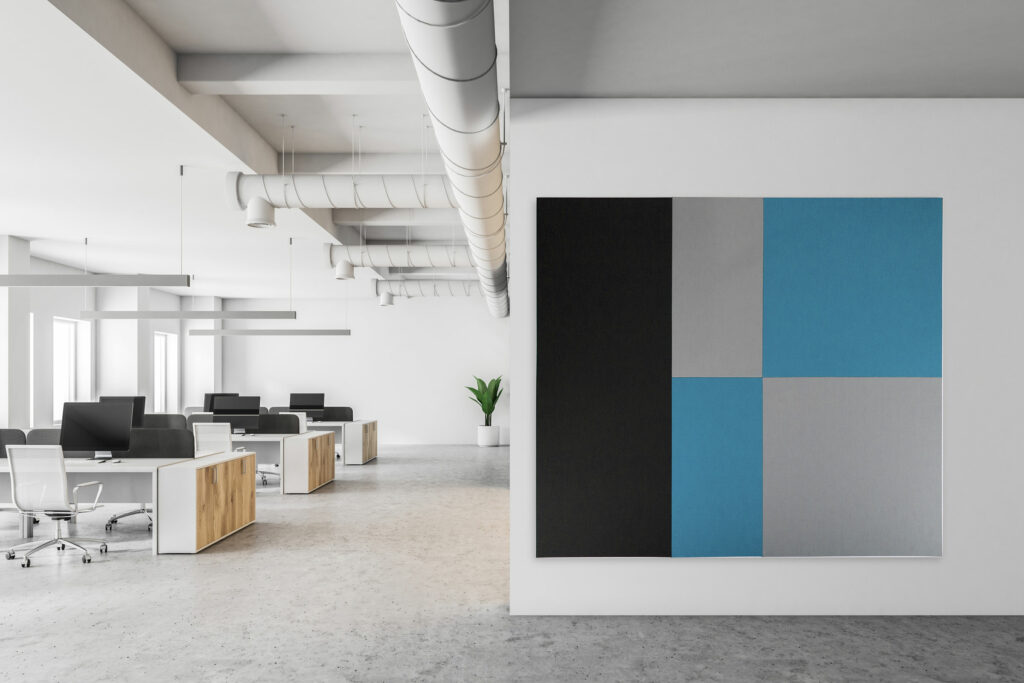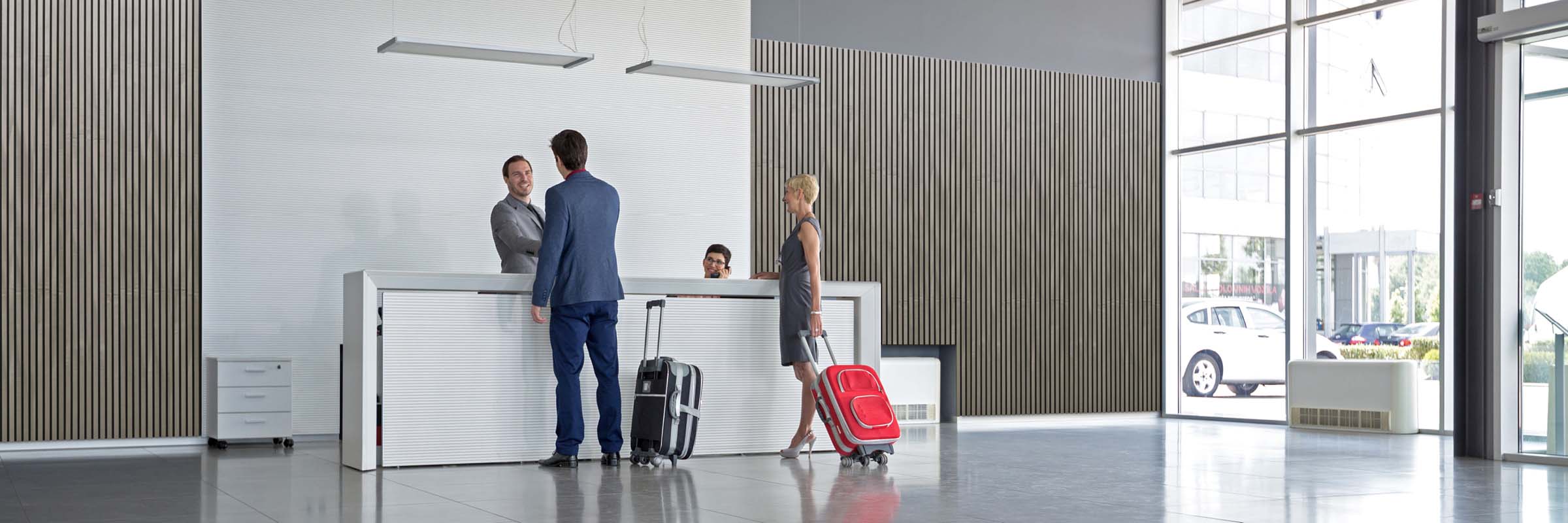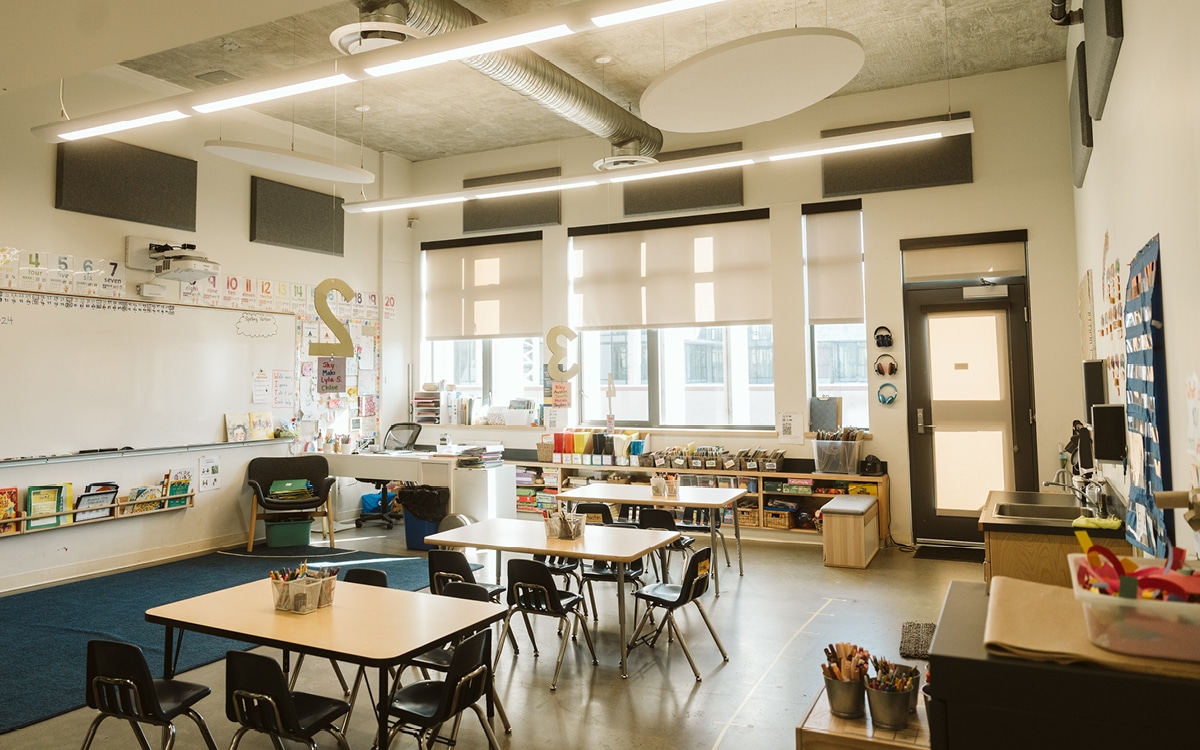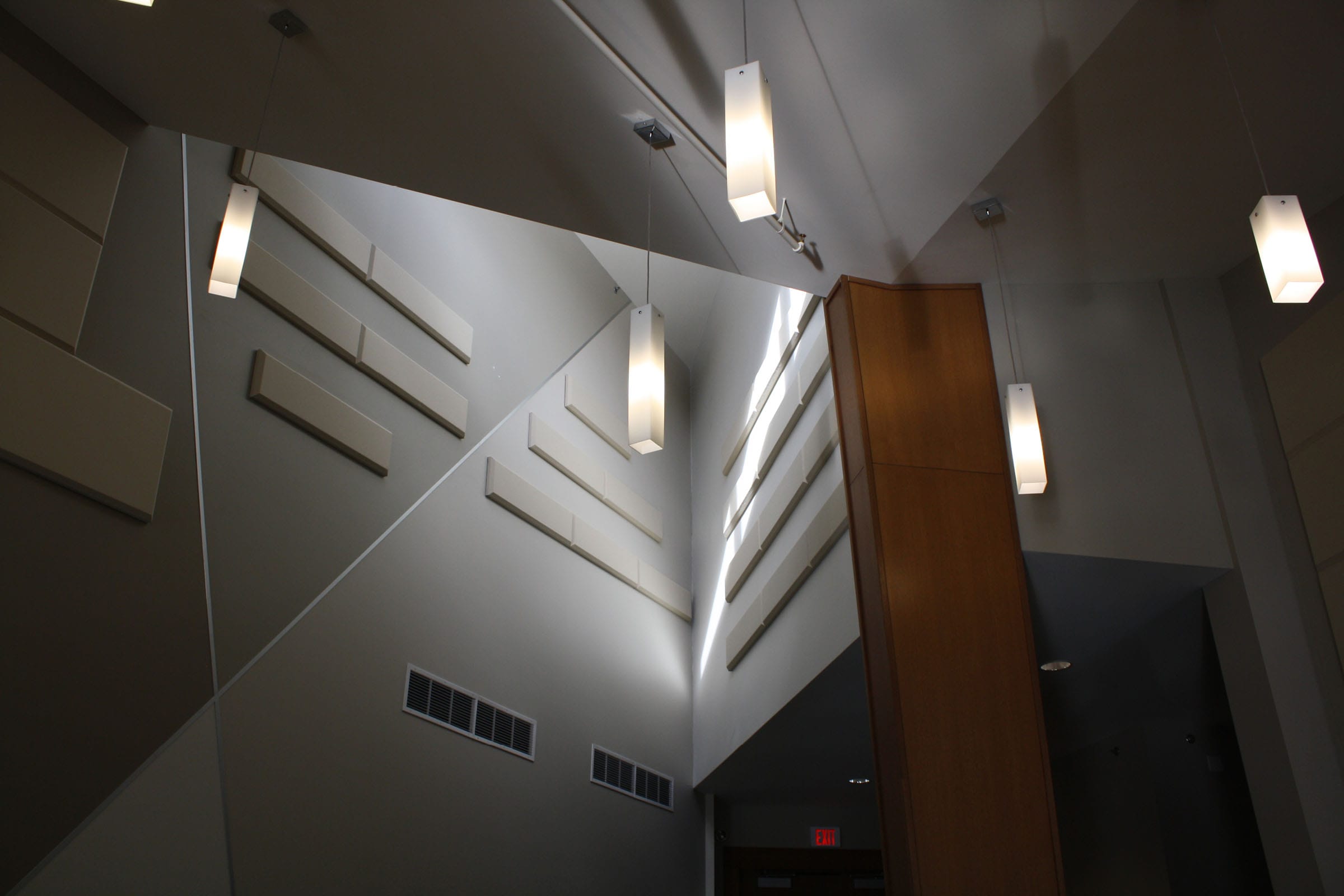Suppose you’ve noticed a space like a restaurant, office, or school that felt good to be in. In that case, acoustic treatment is likely partly responsible. Many studies help us see the links between acoustics, human wellness, and how we experience these places.
Using their findings as a guide, let’s look at a few professional environments to see how professional acoustic design can improve them, protect people’s health, and foster a better experience for all.
Restaurants and Food Service
The food service industry is essential to the economy and local communities. It’s also a hotbed of customer complaints, and a Zagat National Survey offered a surprising insight into ambient sound’s role in those complaints. While 28% were understandably related to service, the next-highest, at 25%, were about noise. In some larger markets, such as New York City, Boston, and San Francisco, noise actually took the number one spot.
That means one out of four restaurant diners had a negative experience simply due to the sound of the room they were in. Those numbers don’t lie: a noisy environment can prevent customers from returning and hurt your bottom line. One has to wonder if acoustic treatment could have also helped with some of those service complaints.
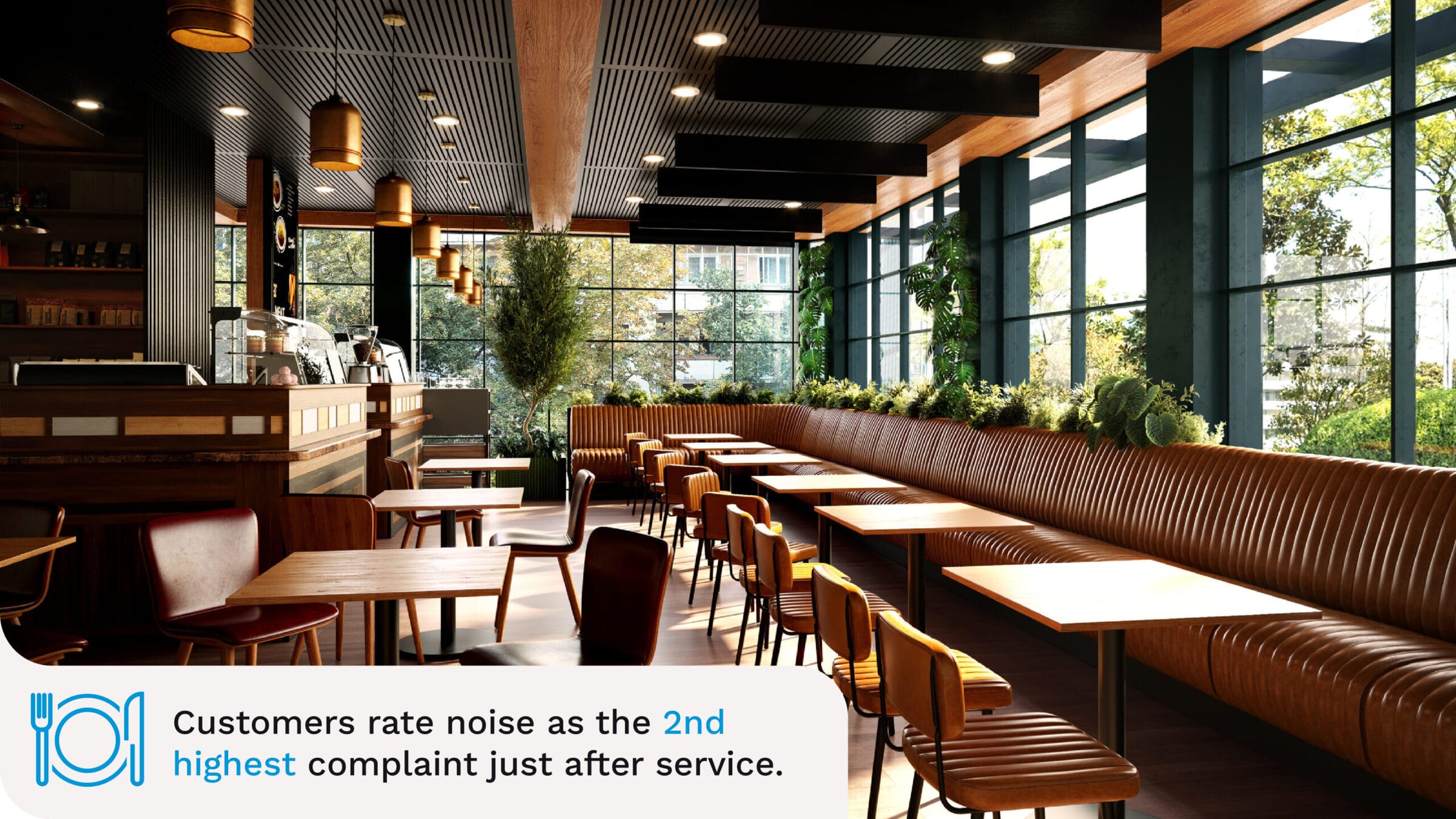
Creating a Better Dining Experience
Thankfully, turning an untreated restaurant into a space your customers will enjoy is possible. Covering only 15% to 20% of surfaces with acoustic panels—like Primacoustic Broadway products—makes a significant improvement. Even this minimal coverage dramatically reduces echoes and ambient noise. Or, without changing the room’s visual appeal, you can achieve similar results with ceiling-mounted solutions, such as Broadway Clouds and Broadway Baffles.
Headsets and Call Centers
Whether for emergency services, call centers, customer service, or anything else, millions of workers in the USA and many more around the world perform their jobs while wearing an earphone-equipped headset. These headsets pose a very real threat to workers’ hearing.
The United States National Institute for Occupational Safety and Health (NIOSH) recommends sound pressure levels not exceed 85 dBA during a regular eight-hour work shift. However, a recent study by Daiwa House Industry Co., Ltd. and Kindai University in Japan shows that headset volumes in many call centers are often up to 4 dBA beyond this safety limit, sometimes reaching as high as 18 dBA above it.
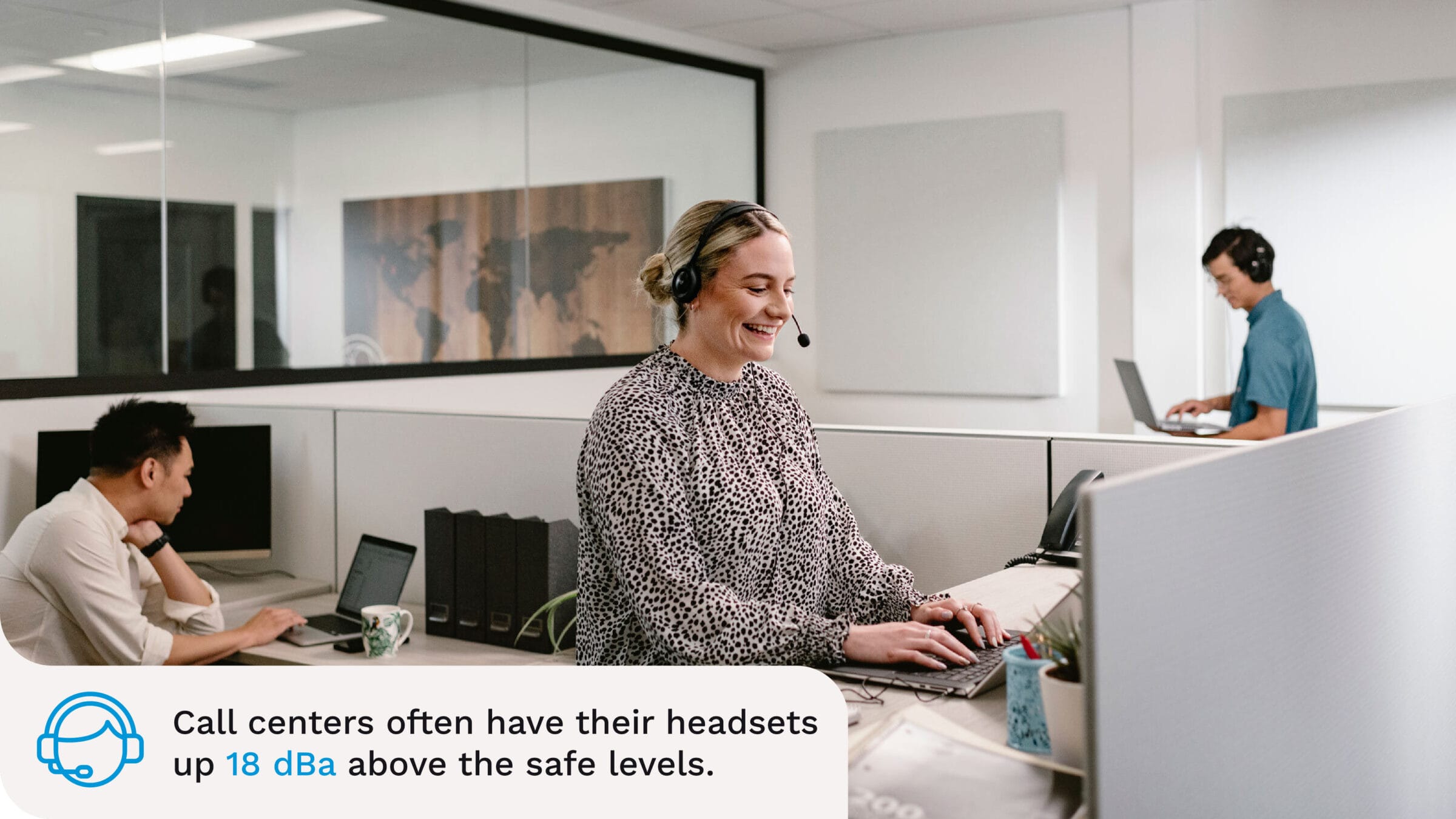
But the danger isn’t only the headset itself. Employees reported numerous reasons for these volumes, most about the room itself. They included a noisy HVAC system, loud employee conversations, radio communications, and many other distractions.
These volumes are dangerous and can lead to common hearing damage symptoms, putting workers at risk of prolonged ear ringing, loss of balance, and heightened sensitivity to noise. They can also become irritable, fatigued, and prone to increased errors.
Protecting Your Workers
You don’t need a lot of sound treatment to bring things down to safer levels. For call centers, only 17% to 25% wall coverage will create a dramatic decibel reduction. But a combination of wall and ceiling treatment is the most effective solution. Together, they offer the broadband absorption needed to control fatiguing echo flutter and other unwanted ambient noise. You can also retrofit rooms featuring T-bar ceilings with highly absorbent Stratotiles, which control things without additional paneling. Remember, broadband absorption is crucial to a safer environment and lets workers return their headsets to a safe and comfortable level.
Schools and Educational Facilities
Published in 2012, Essex Study-Optimal Classroom Acoustics for All provides valuable information on the benefits of acoustically-treated classrooms for students K-12. The study focused on one specific vector—the impact of reducing reverberation.

Reverberation is the result of sound reflecting off of hard surfaces. We measure these reflections by the time it takes for a sound to decay 60 dB in a given space. The ANSI (American National Standards Institute) suggests an acceptable reverberation time for instruction in a classroom be less than 0.7 seconds when unoccupied. Unfortunately, many classrooms greatly exceed this recommendation.
A typical classroom has around 1,500 feet of wall surface area. Depending on the materials used, this reverberation time is about 1.9 seconds. That’s almost three times the ANSI’s acceptable limit. This excessive reverberation can make it difficult for students to focus on, understand, or even hear what is being taught.
Students That Hear Better, Learn Better
Broadband acoustic absorption is, of course, the solution. Adding 17% to 20% acoustic treatment wall coverage to our example classroom can lower the reverberation time to the recommended 0.7 seconds. As with restaurants and call centers, a combination of wall and ceiling treatments is most effective.
Reducing reverberation time in the classroom has been shown to significantly improve speech intelligibility and comprehension. Treating walls and ceilings with broadband-absorbent panels will create a better and more productive environment for students and faculty alike.
Creating Better-Sound Spaces by the Numbers
Whether these studies looked at places of work, leisure, or learning, acoustic treatment is a key element in helping achieve your goals with the space. They’re also proof that, with a bit of planning and a relatively small investment, your restaurant, call center, and classroom will be healthier, produce better outcomes, and become much more desirable to inhabit.
Don’t let bad acoustics hold you back. Reach out today and learn how to get started optimizing your environment.
